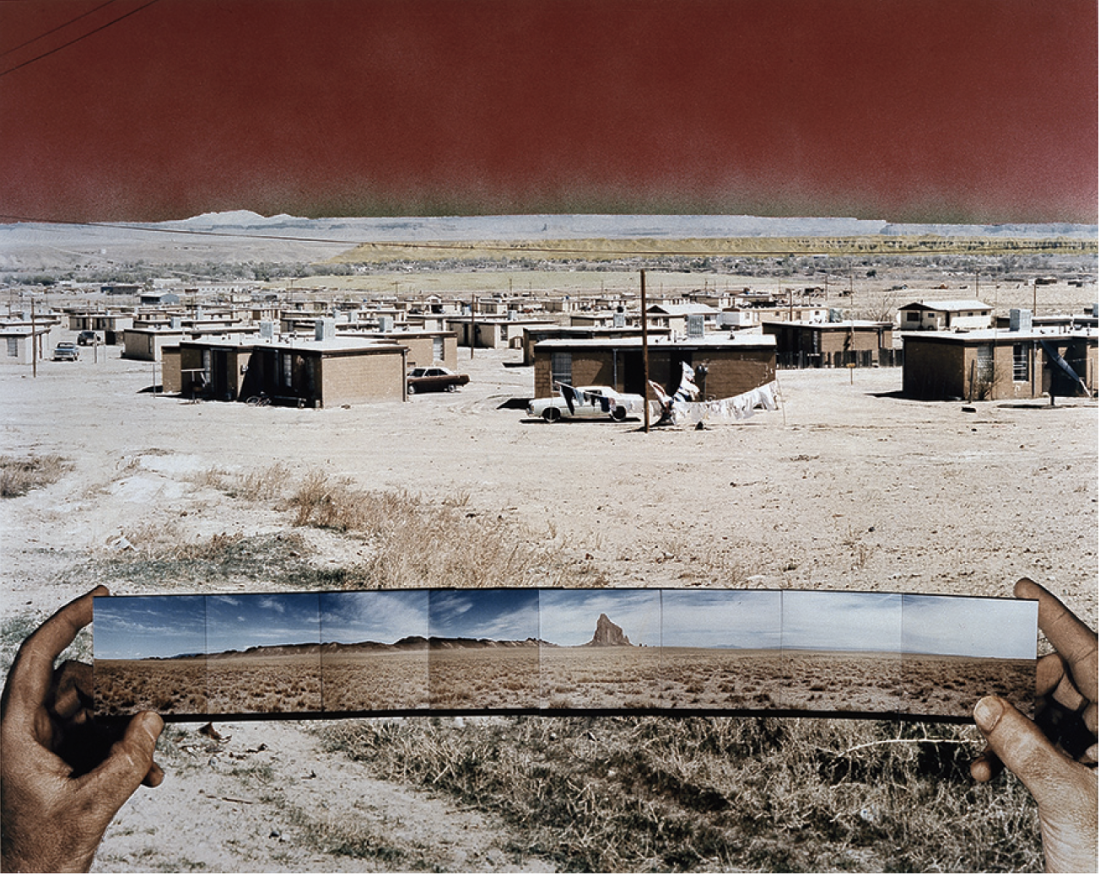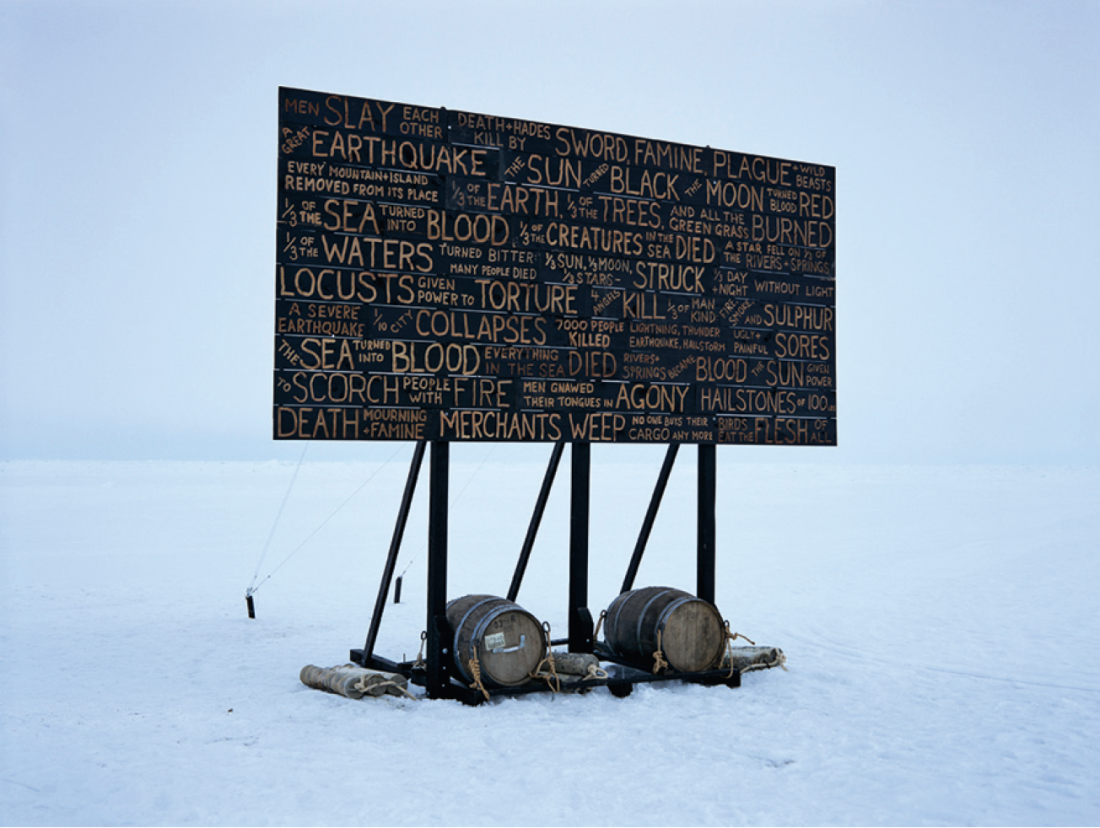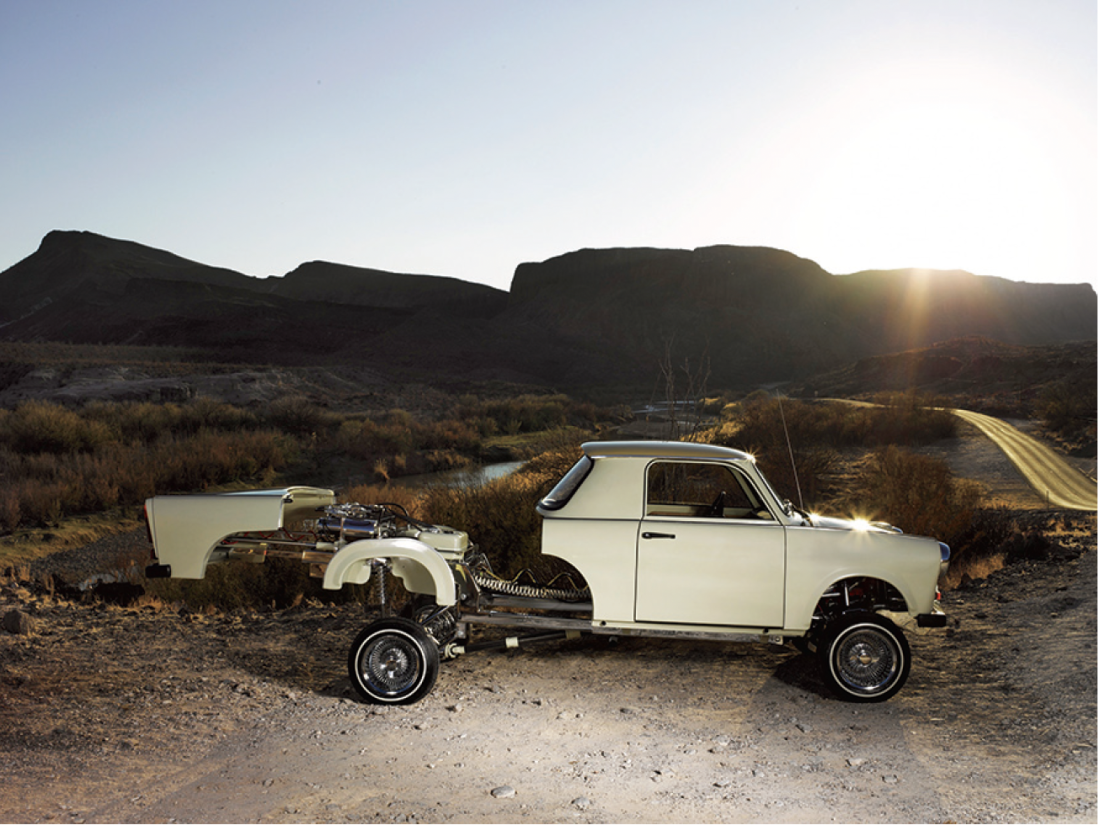“Unsettled Landscapes”
“SITElines: New Perspectives on Art of the Americas,” a six-year venture linking a series of exhibitions that explore contemporary art and cultural production in the Western Hemisphere, is alive with the unexpected. As a relaunch of SITE Santa Fe, the art pilgrimage inaugurated in 1995, it is a presentation of a brave new vision of commitment to community and place, and to new, and perhaps sometimes under-recognized art that follows what Chief Curator Irene Hoffmann calls “the radical rethinking of the biennial form.” The first of these promising exhibitions, “Unsettled Landscapes,” opened in July 2014.
We emerge into this world of imagined places via the SITE building, itself an artwork. Redesigned by Greg Lynn, the American architect/designer best known for his work in robotics, as an intervention piece in SITE’s “More Real? Art in the Age of Truthiness” exhibition in 2012, the space has a seamless quality. It allows and even encourages viewers to see the exhibition in a state of compasslessness, from northern Canada to southern South America and inside all the stories that these landscapes have to tell.

Patrick Nagatani, Bida Hi/Opposite Views, Northeast. Navajo Tract Homes and Uranium Tailings Southwest. Shiprock. New Mexico, 1990, chromogenic print, 27 ¾ x 35 ¾ inches. Courtesy SITE Santa Fe.
As we move through the spaces and the stories unfold, we begin to understand that the scope and scale of this ambitious project weaves geographical, cultural, linguistic and psychological multiplicities into one dynamic continuity. From Nunavut to Tierra del Fuego, we learn about historical narratives and personal and transpersonal urgencies. We experience their politics and are provoked to reconsider stereotypes. Compelling, disparate voices come together in this seemingly quiet, elegant gathering of works.
One of the opening panels, “Confronting Paradise: Land and Landscape in the Caribbean,” gave insight into the secrets of one of the lesser-known areas and underlined the intention of “SITElines” to venture into some of the uncomfortable spaces where art, life and land commingle. Moderated by András Szántó of the Davidoff Art Initiative, which focuses on support for Dominican and Caribbean artists, conversation included artists Blue Curry (Bahamas), Deborah Jack (St. Maarten) and Glenda Léon (Cuba), and critics Christopher Cozier (Trinidad) and Sara Hermann (Dominican Republic). Themes of disconnectivity among the islands and their diverse identities, the history and influences of colonization and the objectivity and subjectivity of the artists themselves were explored through discussions of geography.
When we think of the Caribbean, we might think in the postcard imagery typical of tourists—of rum and bikinis and torpid nights on the beach. We project onto a landscape a cliché of an exotic, commodified lifestyle that we don’t pause to question. The artists who live in the Caribbean are anxious to explore the opposite in their work: urbanism, feminism and racialism—themes that subvert this projection. These desires for deep self-exploration in a quest for the formation of a subjective self are less welcomed by the art world who prefer to see this holiday destination and the art it produces in an objectified way. The provocative panel discussion opened a Pandora’s Box of contemplation that moved into the range of the carefully selected works of “Unsettled Landscapes.” A crossroads seemed to emerge where alienation and agency could unite to become a spiritual force.

Kevin Schmidt, A Sign of the Northwest Passage, 2010, light-jet print, cedar framed, 64.5 x 49 inches. Courtesy SITE Santa Fe.
Candice Hopkins curated the Canadian artworks in “Unsettled Landscapes,” which have a powerful presence in the show. Although disparate in origin they too mirror this force. From Shuvinai Ashoona’s complex and beautiful ink drawings of Cape Dorset seen from above, to Ohotaq Mikkigak’s large-scale Arctic landscape, through Kevin Schmidt’s A Sign in the Northwest Passage, to Charles Stankievech’s haunting escapade to the far North Pole, and Raymond Boisjoly’s ephemeral reserve gas stations—all the Canadian artists, regardless of cultural heritage, congregated in this exhibition around the spirit, or the soul, inhabiting Canadian topography.
Stankievech’s piece, The Soniferous Æther of The Land Beyond The Land Beyond, in examining the epistemology of secrecy at a military spy headquarters, seems an unlikely spiritual candidate. But the artist looks at the architecture and the surrounding whiteness in such an astutely scientific manner that at a certain point, and we can’t say when, the film, and his eye, give over to the numinosity of Arctic isolation. It feels like loneliness at first, but as you linger in the white-padded viewing room and become immersed in his moving 35mm film, this too morphs into a greater feeling, and loneliness becomes existential peace.
There is something in the content and rendering of all these works that recalls what Australian Aboriginals name the Dreamtime—an expression of the inexpressible that gathers human beings around and inside the presence of a place. Kent Monkman’s room-scale diorama, Bête Noire, which was commissioned for SITElines, throws the last arrow into this dreamy narrative by introducing Miss Chief, a transsexual alter-ego in tiara, necklace and patent S&M boots. She is engulfed in ironic references to Cubism and natural science’s framing of ‘le sauvage’—bringing the romance of the landscape motif firmly into the 21st century. Here, Dreamtimes collide to create a wholly contemporary Canadian self, one that appears to mix all cultural influences with the soil itself, emerging as something larger and more scintillating than the sum of its parts.

Liz Cohen, Rio Grande, 2012 c-print, 50 x 60 inches. Courtesy the artist, Salon 94, New York and SITE Santa Fe.
The shared concerns along the metaphorical Pan-American highway, which include the nomadic, the invisible, the painful realities lurking behind idyllic imagery and the not-innocent in nature, converge around a connection with the land that is remarkable for being so unusual. Dispossession, we are made to understand—cultural, political, social—is a painful experience, and yet it is through this viewfinder that ordinary things like time, soil, salt, trees and light become extraordinary. The work of the artists shown here offers viewers a mystical reading of our world. ❚
Unsettled Landscapes is on exhibition at SITE Santa Fe from July 20, 2014 to January 11, 2015.
Caia Hagel’s fiction, profiles and cultural travelogues appear in magazines and on social media and TV networks internationally.

